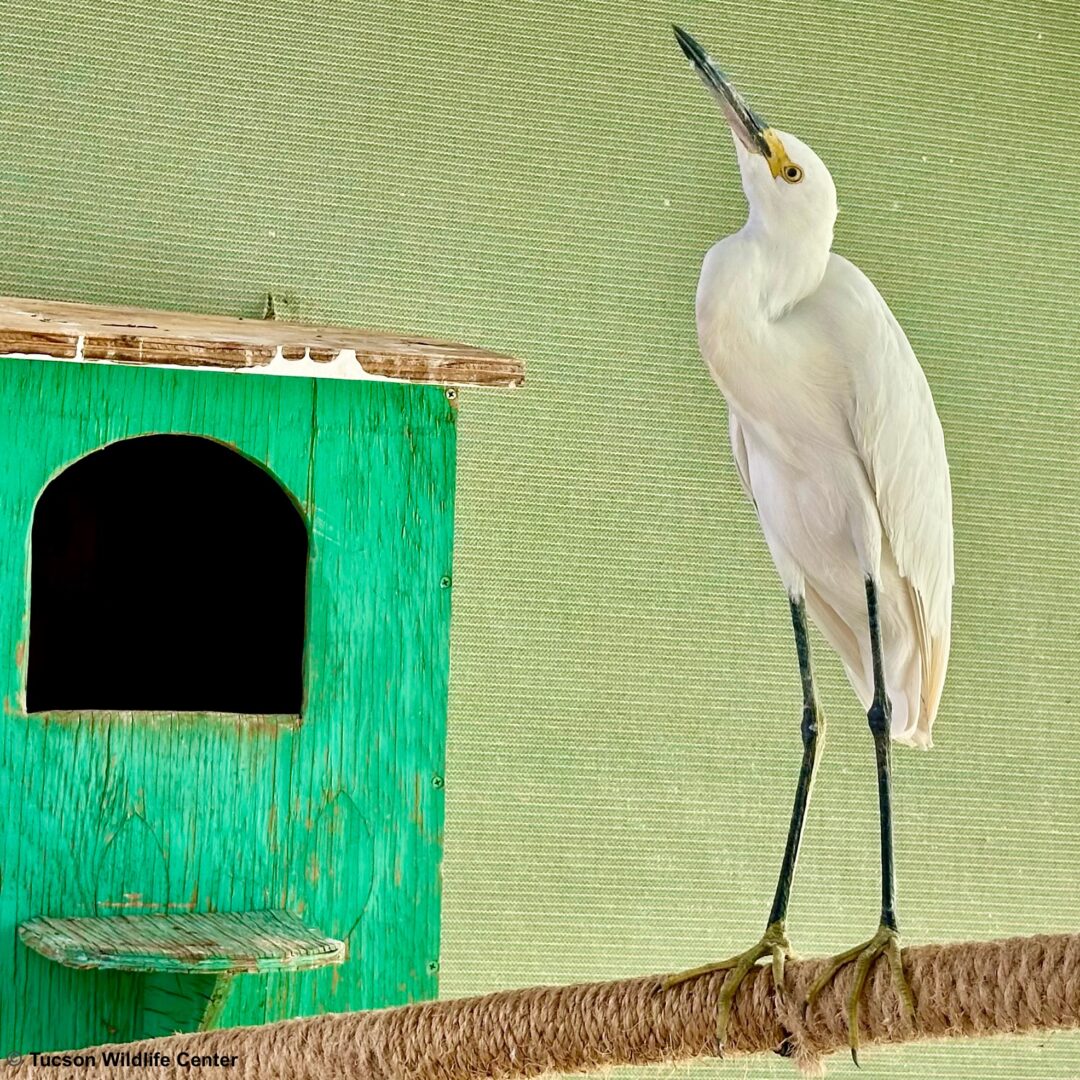
Juvenile Snowy Egret
This beautiful snowy egret juvenile was brought to Tucson Wildlife Center after being found standing in the middle of a busy road. When approached by his rescuer, he made no attempt to fly away, indicating the likelihood of injury or distress. An examination by TWC’s wildlife care team found the egret to be severely dehydrated. After several days of rest, receiving fluids and a good fish diet, he was moved to a large enclosure for continued rest and observation until he becomes strong enough to be released back to the wild.
Featured multiple times on the USPS postage stamp, the adult snowy egret is among the most elegant of the herons, with immaculate white plumage, black legs, and bright yellow feet. Immature snowy egrets, like our patient, have duller, greenish legs with a yellow stripe up the back. A migratory bird, snowy egrets typically are not found in Tucson year-round. They begin their migration southward in early fall as temperatures start to drop in their northern breeding grounds and can be spotted in Tucson by late September or early October, until February or March.
During the breeding season, adult Snowy Egrets develop long, wispy feathers on their backs, necks, and heads. In 1886 these plumes were valued at $32 per ounce, which was twice the price of gold at the time. Plume-hunting for the fashion industry killed many Snowy Egrets and other birds until reforms were passed in the early twentieth century. Early conservationists rallied to protect egrets, and this species is once again a common sight in shallow coastal wetlands. (www.allaboutbirds.org/guide/Snowy_Egret)
If you would like to help patients like this snowy egret, please click the donate button below:
Another way you can contribute is to visit our “wish list” on Amazon by clicking on the Amazon Wish List button below. We appreciate it, as will all the wild animals in our care!




